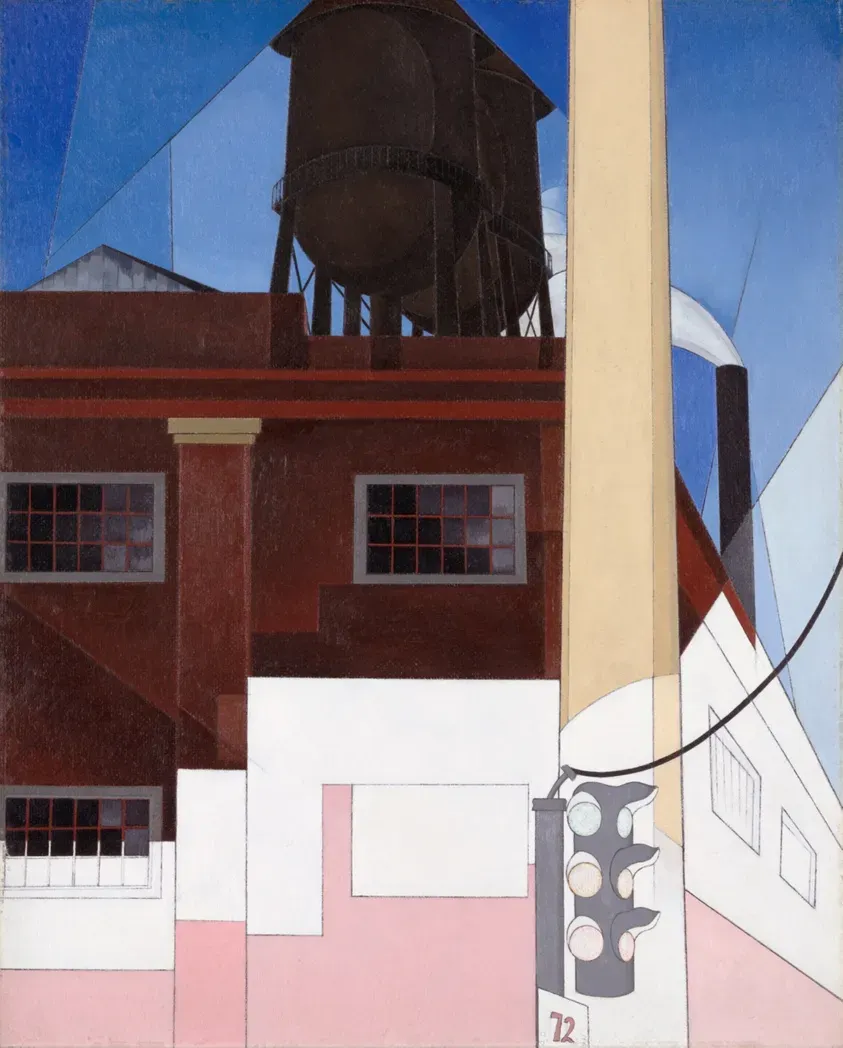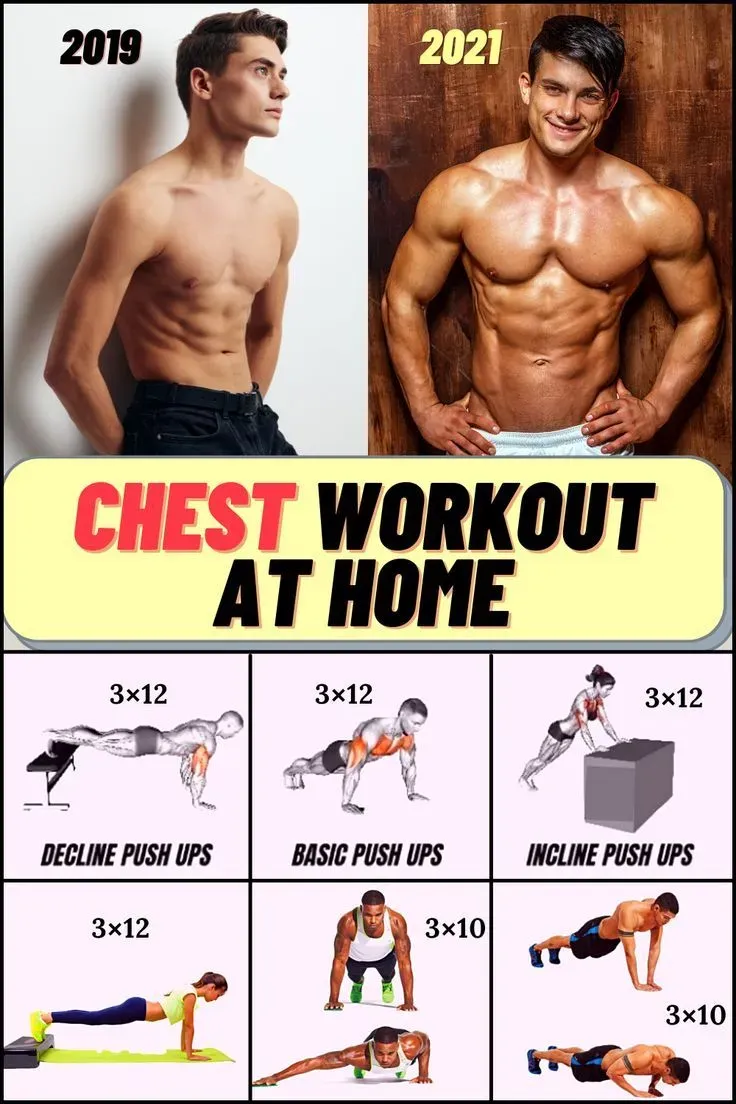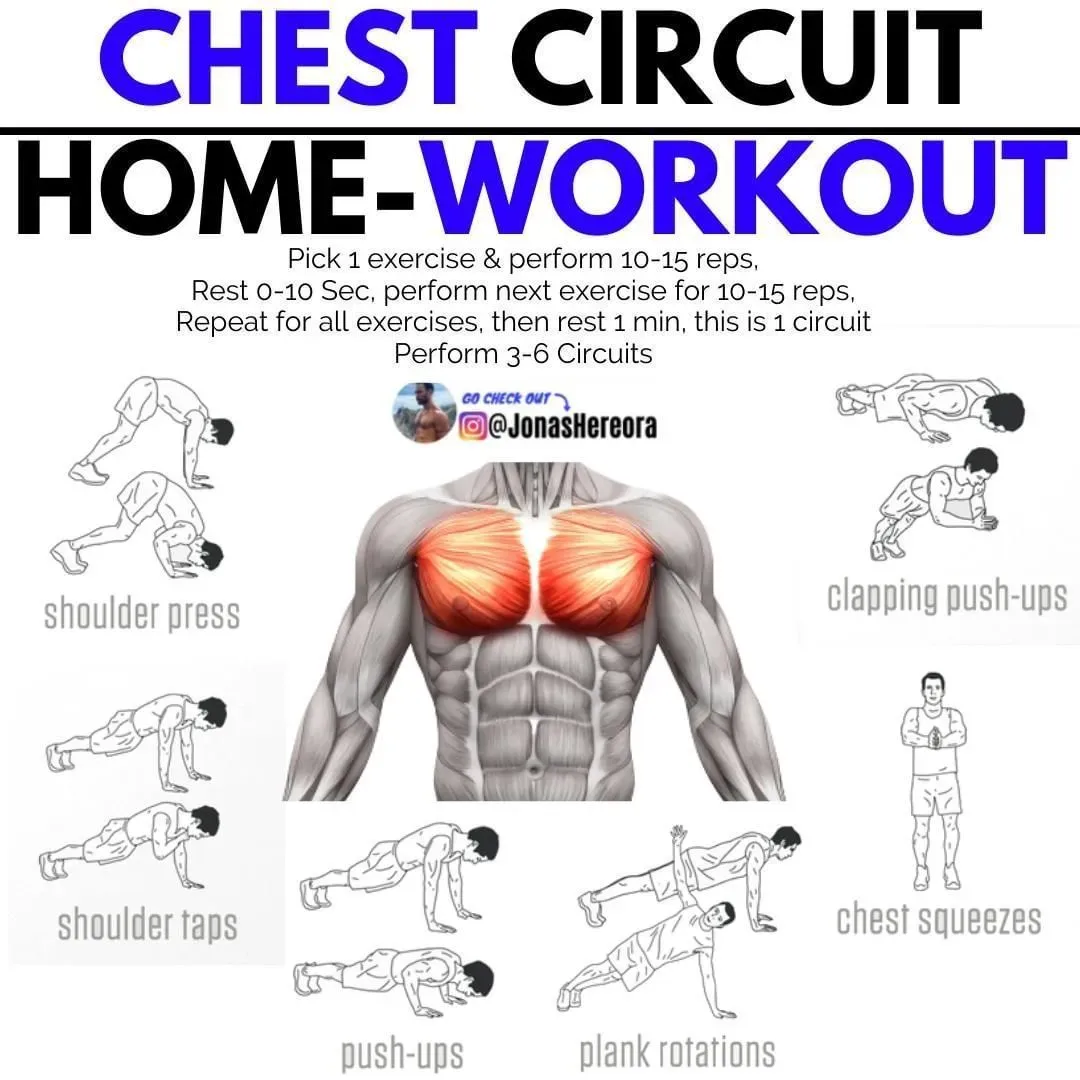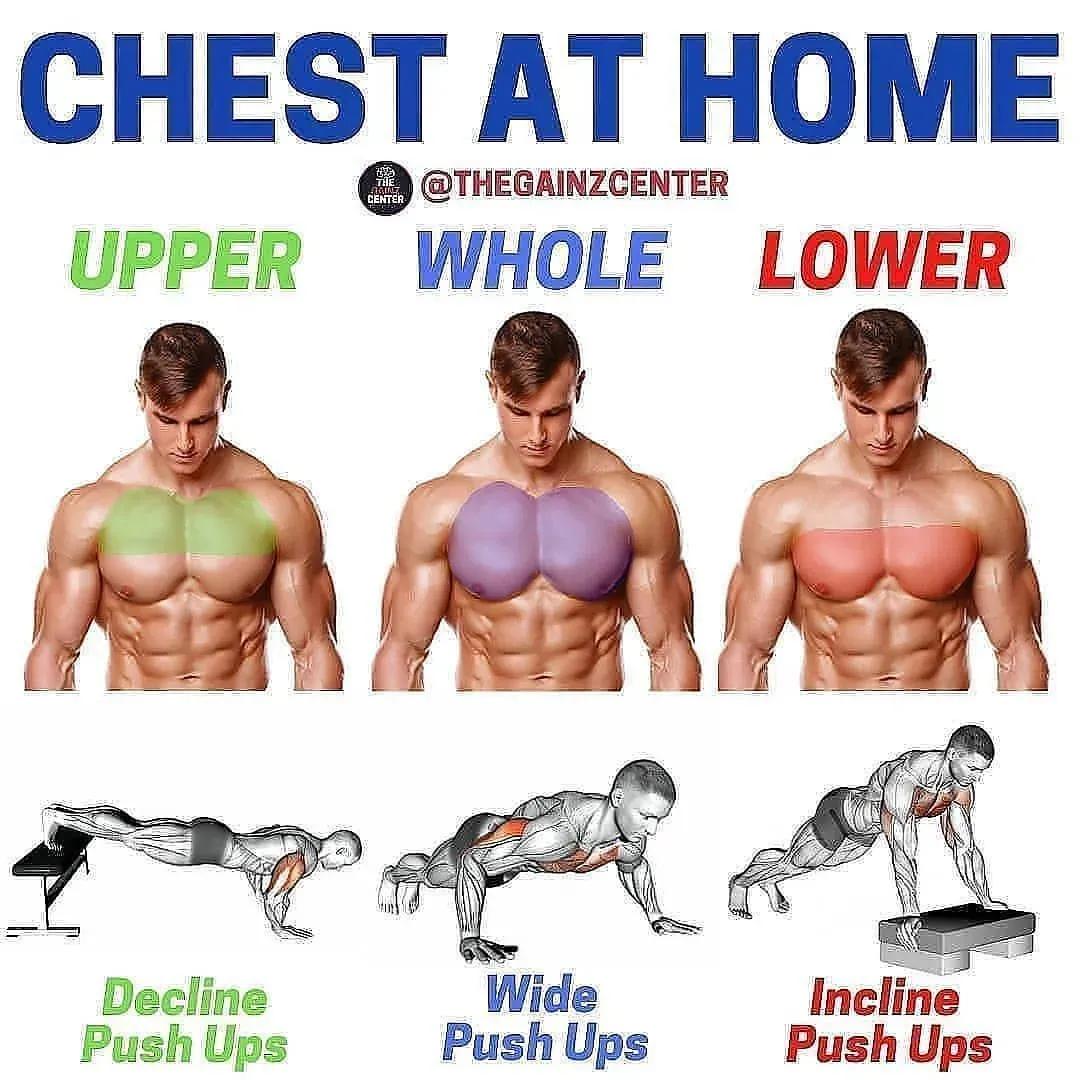Table of Contents
Let's be honest. When you picture building a serious chest, you probably see crowded gyms, heavy barbells, and maybe a guy grunting way too loud on the bench press. The thought of a real chest gain workout at home might sound like something reserved for beginners or folks just trying to stay "in shape." Forget the iron jungle; significant chest development isn't exclusive to fancy equipment. You can etch out impressive pecs right where you are, using little more than your own bodyweight or some basic, affordable gear.
Understanding Your Pecs: Why Home Training Works

Understanding Your Pecs: Why Home Training Works
What Your Pecs Actually Do
Alright, let's ditch the gym-bro science for a second. Your chest muscles, the pectoralis major and minor, aren't just there to look good in a tight shirt. They're primarily responsible for pushing things away from your body and bringing your arm across your midline. Think about throwing a punch, hugging someone, or, yes, doing a push-up. These aren't movements exclusive to a weight room. Understanding this basic function is step one in realizing a legitimate chest gain workout at home isn't some fantasy.
The pec major is the big fan-shaped muscle you see, handling most of the heavy lifting in pressing movements. The pec minor sits underneath, playing a role in shoulder stability and rib cage movement. When you train them effectively, you're not just building size; you're enhancing functional strength for everyday tasks and sports. Ignoring how these muscles actually work means you're just moving weight (or your body) without purpose.
Making Bodyweight (or Minimal Gear) Work
Now, the common argument against home training for size is usually "you can't get enough resistance." This is fundamentally flawed thinking. Muscle growth, or hypertrophy, responds to mechanical tension, muscle damage, and metabolic stress. You can absolutely create all three with bodyweight or minimal equipment if you apply the right principles. A standard push-up, for instance, is a compound movement hitting your chest, shoulders, and triceps, mimicking a bench press but using your body's leverage.
The trick is progressive overload – making the exercise harder over time. This doesn't always mean adding plates to a bar. It can involve changing leverage, increasing reps, slowing down the movement (time under tension), reducing rest times, or using variations that increase the load on the target muscle. A simple set of resistance bands or a pair of adjustable dumbbells opens up even more possibilities, allowing you to hit different angles and resistance profiles just like machines in a gym.
Progressive Overload Strategies for Your Home Chest Workout:
- Increase repetitions per set.
- Perform more sets overall.
- Reduce rest time between sets.
- Slow down the eccentric (lowering) phase of the movement.
- Pause at the bottom or top of the movement.
- Use variations (e.g., decline push-ups, one-arm push-ups progressions).
- Incorporate resistance bands for added tension.
- Use dumbbells for increased load and range of motion (if available).
Effective Exercises for Your Chest Gain Workout at Home

Effective Exercises for Your Chest Gain Workout at Home
Mastering the Humble Push-Up
let's start with the king of bodyweight chest exercises: the push-up. Don't roll your eyes. This isn't just gym class stuff. A properly executed push-up is a compound powerhouse that hammers your chest, front shoulders, and triceps. The beauty is its versatility. Too easy? Elevate your feet on a chair or bed for a decline push-up, shifting more load to your upper chest. Too hard? Elevate your hands on a sturdy surface like a table or counter to decrease the resistance. The key is control. Lower yourself slowly, feeling the stretch in your chest, and push back up with power, squeezing your pecs at the top. Think of it as a moving plank; keep your body rigid from head to heels.
Hitting Angles with Variations and Gear
Building a balanced chest means hitting it from different angles. While the standard push-up is great, variations and minimal gear let you sculpt more effectively. Incline push-ups (hands elevated) target the lower chest more. Decline push-ups (feet elevated) hit the upper chest harder. If you have resistance bands, band push-ups add accommodating resistance, meaning the tension increases as you push up, challenging the muscle differently. Dumbbells, even a light pair, unlock exercises like the dumbbell floor press or flyes. These allow for a greater range of motion than a push-up and isolate the chest more directly. Even household items can substitute; two sturdy chairs let you perform dips, a brutal exercise for the lower chest and triceps.
Effective Home Chest Exercises:
- Standard Push-Up
- Incline Push-Up (Hands Elevated)
- Decline Push-Up (Feet Elevated)
- Diamond Push-Up (Hands close for inner chest/triceps)
- Resistance Band Push-Up
- Dumbbell Floor Press
- Dumbbell Floor Flye
- Chair Dips (Advanced)
- Pseudo Planche Push-Ups (Lean forward over hands, advanced)
Focusing on the Squeeze and Stretch
Beyond just moving through space, you need to actively engage the muscle you want to grow. This means focusing on the mind-muscle connection, particularly during the peak contraction and the stretched position. For push-ups, consciously squeeze your pecs together as you push up. For dumbbell flyes, feel the stretch across your chest at the bottom and contract hard as you bring the weights together. Exercises like band chest flyes or even just isometric holds at the top of a push-up can help you learn to activate your chest muscles more effectively. This isn't just about lifting; it's about feeling the muscle work through the entire range of motion. That focus turns standard movements into powerful drivers for your chest gain workout at home.
Maximizing Your Chest Gain Workout at Home for Real Results

Maximizing Your Chest Gain Workout at Home for Real Results
More Than Just Pushing: Consistency, Intensity, and Fuel
Look, doing a few push-ups whenever the mood strikes won't magically build a barrel chest. Getting actual chest gain workout at home requires structure and effort, just like any training program. You need to hit your chest muscles consistently, ideally 2-3 times per week, allowing for recovery in between. Each session needs intensity – you should be pushing close to failure within your chosen rep range (think 8-15 reps for hypertrophy). If you can crank out 30 push-ups without breaking a sweat, you're not working hard enough; it's time for a harder variation or adding resistance. And don't kid yourself, you can't build muscle out of thin air. Your diet needs to support growth, meaning enough protein and calories. Skipping meals or fueling up on junk after a solid home session is like trying to build a brick wall with no mortar.
Beyond the PushUp: Structuring Your Home Chest Routine

Beyond the PushUp: Structuring Your Home Chest Routine
Putting the Pieces Together: Building Your Home Routine
so you know push-ups aren't the only game in town, and you've got some variations or maybe even a set of bands or dumbbells. Great. But just doing a random assortment of exercises won't cut it for serious chest gain workout at home. You need a plan. Think of it like building a house; you don't just start nailing boards together. You need a blueprint. Your routine should include exercises that hit the chest from different angles – maybe some flat pressing (standard push-ups, floor press), some incline work (feet-elevated push-ups), and maybe some flyes for that stretch and squeeze (floor flyes, band flyes). The order matters too. Often, starting with the most challenging compound movement when you're freshest makes sense, then moving to variations or isolation work.
Consistency is the bedrock. Doing a killer workout once every two weeks isn't a routine; it's an event. Aim for 2-3 structured chest sessions per week, giving your muscles a chance to recover and rebuild in between. The volume – the total number of sets and reps – needs to be sufficient to stimulate growth. For most people aiming for hypertrophy, hitting around 10-20 challenging sets for the chest per week is a good target. This isn't a hard rule carved in stone, but it's a solid starting point to ensure you're doing enough work to actually see changes from your chest gain workout at home.
Sample Home Chest Workout Structure
So, what does a structured chest gain workout at home actually look like? It doesn't have to be complicated. A simple approach involves picking 3-4 exercises that cover different angles or movement patterns. For instance, you could start with a demanding push-up variation like decline push-ups or pseudo planche push-ups if you're advanced. Follow that with a flat press movement, like standard push-ups or dumbbell floor presses. Then, add an exercise that focuses on the squeeze or stretch, like dumbbell flyes or band flyes. Finish up with something that targets the inner chest or works a slightly different plane, maybe diamond push-ups or squeezing dumbbells together during a floor press.
For each exercise, aim for 3-4 sets in the 8-15 rep range, pushing close to failure on the last few reps of each set. Rest 60-90 seconds between sets. If you can easily hit 15 reps with good form, it's time to progress by choosing a harder variation, adding resistance, or increasing time under tension. This isn't just about grinding through reps; it's about performing quality repetitions that challenge the muscle effectively throughout the entire range of motion. That focus on execution, combined with consistent progression, is what drives results in your chest gain workout at home.
Here’s a basic template you could adapt for your home chest gain workout:
- Compound Press (e.g., Decline Push-Ups, Dumbbell Floor Press): 3-4 sets of 8-15 reps
- Flat/Slight Incline Press (e.g., Standard Push-Ups, Hands-Elevated Push-Ups): 3-4 sets of 10-15 reps
- Flye/Isolation (e.g., Dumbbell Floor Flyes, Resistance Band Flyes): 3-4 sets of 12-20 reps
- Inner Chest/Finisher (e.g., Diamond Push-Ups, Close-Grip Floor Press): 2-3 sets of max reps or 15-20 reps
Your Home Chest Gains: No Gym Required
So there you have it. Building a chest that doesn't look like you've been skipping every upper body day is entirely possible from your living room. We've covered the fundamentals, busted the myth that you need a rack full of plates, and laid out the kinds of exercises that actually make a difference for a chest gain workout at home. Stop scrolling through endless gym selfies and start putting in the work where it's convenient. Your pecs aren't going to build themselves, and frankly, proving the gym rats wrong is a pretty solid motivator anyway.
